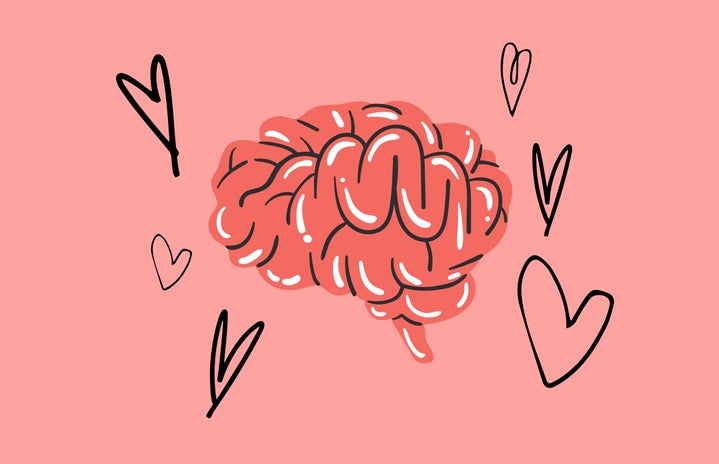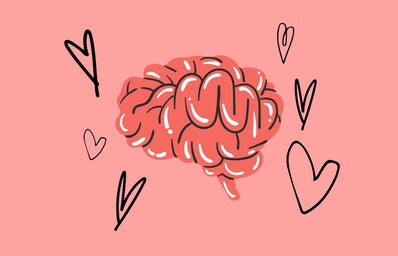When I was 20 years old, I sought out an autism evaluation. I did so at the suggestion of my younger sister, who pieced together the symptoms I exhibited throughout my childhood. Once evaluated, I was quickly diagnosed with autism spectrum disorder. My doctor explained that I had learned to “camouflage,” or suppress my more severe symptoms to fit in. Also known as masking, this practice is a common survival tactic among autistic women whose behaviors are deemed socially unacceptable. Autism is a gendered and racialized disability. A study published in 2022 finds that autism is underdetected in female and Black children in the United States more than their respective counterparts as a result of systemic biases. Because this finding is relatively new, it is likely that autism is also underdiagnosed in other identities that have not yet been studied. There are many common experiences among autistic people of various identities. I hesitated to name this article “My Experience as a Late-Diagnosed Autistic Woman,” ultimately deciding against it because I want to remain true to my identification as a non-binary person. However, because I present as female, I relate most to the experiences of autistic women.
Surviving the neurotypical world also requires economic privilege. Evaluations can cost hundreds of dollars for a single appointment, and they are not always covered by insurance. After diagnosis, schools require paperwork to provide accommodations, for which psychiatrists often charge fees. Not only do individual biases affect the accuracy of diagnoses, but the medical field itself has limited accessibility. Medical care is a privilege.
I was diagnosed with Level 1 autism spectrum disorder, also referred to as Asperger’s syndrome and high-functioning autism. Both of these terms are outdated, but still commonly used. Developmentally, I was just behind the curve in every aspect. I began walking and talking late enough that my parents checked in with my pediatrician, although I took to it soon after. I also took longer than my peers to learn to read, although once I began, my reading skills developed exponentially quickly beyond that of my age group. Socially, however, I remained behind.
I could no longer mask my autism symptoms when I entered middle school, triggered by having to change schools, rotate class periods, and meet new classmates. I experienced frequent panic attacks, moments of shutdown, intrusive and impulsive thoughts, and social anxiety. My mom took me to a psychiatrist, who diagnosed me with obsessive-compulsive disorder and generalized anxiety disorder. A year later she also diagnosed me with social anxiety disorder, explaining that she, “didn’t want to diagnose me with too much at once.” My psychiatrist often asked me about my self-soothing activities, which she understood to be compulsions. The difference between OCD and autism spectrum disorder is that OCD compulsions are performed to soothe obsessive thoughts, while autistic compulsions are performed to soothe the self overall. My psychiatrist often asked me, “What would happen if you didn’t do X?” “I would be uncomfortable,” I always responded. She pressed me to explain further, searching for the root of the compulsion that didn’t exist. I knew I wasn’t giving her the response she wanted, but I had nothing more to say.
I started playing dumb in high school. Although I maintained As and high Bs in the classroom, I changed my tone of voice and the things I talked about to put on the appearance of someone less intelligent. I had just gained enough social awareness to understand that I did not communicate well, but not enough to know how to change my communication style. So, I played dumb in all areas of my life to make my low social intelligence fly under the radar. Years of camouflaging resulted in a deeply buried self-hatred. Because my diagnosis did not explain the extent of my communication issues, I began to think there was something innately wrong with me that could never be repaired. Dissatisfaction with myself resulted in severe depression that would have been avoidable if I had had the resources to explain and manage my symptoms. It was only a year after receiving my autism diagnosis that I removed this mask and now feel free to discover my true personality. I now feel more comfortable in my skin than I ever have, but I also feel pressure to equip myself with the tools to survive the neurotypical world after graduation. When I look for support in this endeavor, I come out empty-handed. Research about autism is formatted in a way that renders autistic adults invisible. Most research and articles are geared towards parents of autistic children, rather than autistic people themselves. As an adult, I fear that I will either become subject to infantilization by the neurotypical world by being open about my symptoms or fall into the same pattern of self-hatred that arose when I tried to camouflage. I am doing what I can to manage my symptoms, but it is not my fight alone. The neurotypical world must empower people with disabilities to express their needs so that the world itself may adapt to disabled people, rather than the other way around.

